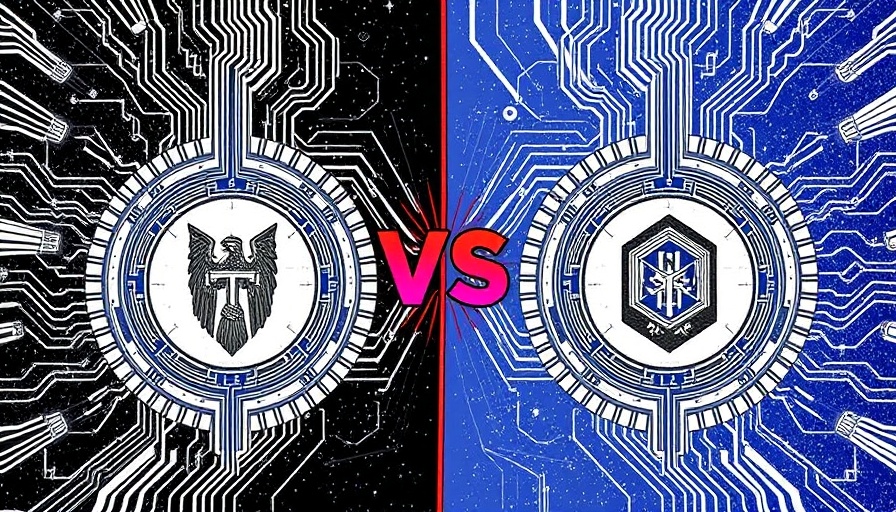
Elon Musk’s Grok-3 Versus GPT-4: The Future of AI Unlocked
The competition in the artificial intelligence (AI) arena has reached a fever pitch, but none are stirring the pot quite like Elon Musk with his latest model, Grok-3. Released in February 2025, Grok-3 is designed to challenge the reigning champion, OpenAI's GPT-4, and offers a fresh perspective on what AI technology can achieve.
The Unique Features of Grok-3
Grok-3 emerges from Musk’s xAI as an advanced AI model that boasts impressive capabilities in mathematics, science, and coding. Unlike its predecessor Grok-2, Grok-3 incorporates what Musk envisions as “maximal truth-seeking,” striving for real-time relevance and deeper social media integration. One of its main features is DeepSearch, which allows it to pull live data from the web, providing real-time answers that other models can rarely match.
The Strength of GPT-4 in the AI Landscape
On the other hand, GPT-4, developed by OpenAI, has established itself as the gold standard for natural language processing and multimodal tasks. GPT-4 excels with improved contextual understanding and structured content generation across a variety of platforms like ChatGPT and Microsoft’s ecosystem. Its strength lies in adaptability and creative output—making it ideal for conversations, document analysis, and content creation.
Comparing Core Strengths and Iterative Improvements
When assessing Grok-3 and GPT-4, distinct strengths arise. Grok-3 shines in tasks demanding analytical rigor, evidenced by its performance in various benchmarks where it has outperformed its rival in math competitions and coding challenges. For instance, Grok-3 scored significantly higher in the recent AIME 2025 math competition compared to GPT-4, signaling its robust analytical capabilities. In contrast, GPT-4 tends to excel in areas that demand a nuanced understanding of language and context, offering a more polished conversational experience.
The Personalities Behind the Models
Notably, the approaches to user interaction diverge sharply between the two AIs. Grok-3 presents itself as having a distinct personality with a more informal and unpredictable tone, mirroring Musk’s own often erratic style. Its responses carry a rebellious streak, with Grok-3 embracing humor and a casual demeanor. In contrast, GPT-4 is meticulous about maintaining neutrality, with adherence to responsible AI guidelines, allowing for fine-tuning options to suit professional standards.
The Implications of Real-Time Updates
Another significant difference between the models is how they handle data. Grok-3 benefits from continuous updates and real-time web interactions, making it an excellent tool for users needing the latest information. Conversely, GPT-4 relies on a static dataset with periodic updates, posing limitations in fast-moving fields.
Monetization and Accessibility: A Look Ahead
Musk’s Grok-3 is currently free for all users, creating a buzz among users eager to experience its capabilities without initial investment. However, premium tiers are expected, offering advanced features for professional users. Meanwhile, GPT-4 has established a subscription model that charges $20 per month, positioning itself as a reliable choice for creators and businesses seeking consistent and high-quality outputs.
What Lies Ahead in the AI Race
The rivalry between Grok-3 and GPT-4 goes beyond just performance metrics; it encapsulates a broader debate about the future of AI—corporate control versus open-source accessibility. As we look ahead, Musk's ambitions for xAI and the rivalry with OpenAI’s Sam Altman could shape the landscape of AI usage and development.
Why This Matters to AI Enthusiasts
For technology enthusiasts and potential users, understanding these models isn’t just about knowing which tool is better; it impacts how we interact with AI in everyday life. As innovations continue to emerge, awareness of these differences can equip users with the knowledge to choose the right AI for their needs.
In conclusion, while Grok-3 and GPT-4 offer exceptional capabilities, they cater to different audiences and needs—be it technical problem-solving or intricate language processing. This ongoing battle not only raises the stakes for AI technology but also keeps users on the edge of their seats as the future of intelligence unfolds.
 Add Row
Add Row  Add
Add 




 Add Row
Add Row  Add
Add 

Write A Comment